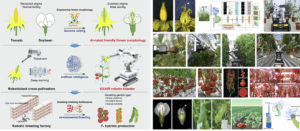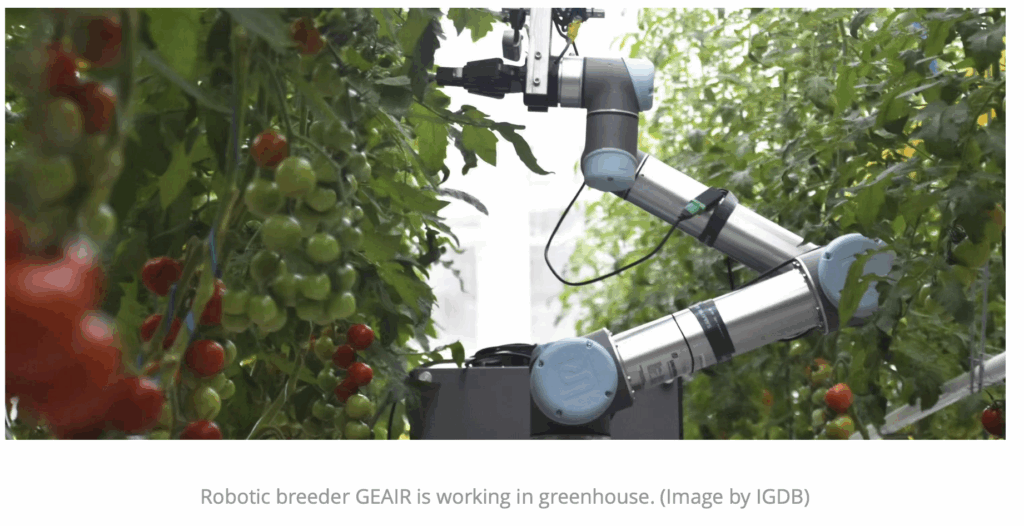https://www.cas.cn/cm/202508/t20250812_5079453.shtml
http://english.cas.cn/newsroom/research_news/life/202508/t20250815_1050761.shtml
A research team led by Xu Cao at the CAS Institute of Genetics and Developmental Biology has developed a breeding robot capable of autonomous patrol and cross-pollination for plant breeding
The vast majority of commercial plant varieties are hybrids. However, due to their closed flower pattern and retracted stigmas, global tomato hybrid breeding and seed production still rely entirely on manual cross-pollination. The labor cost of this work accounts for over 25% of the total cost of tomato breeding, with manual detasseling alone accounting for 40% of the cost of cross-pollination. With an aging population, the labor cost of hybrid seed production continues to rise annually. Furthermore, some crops with closed flower patterns, such as soybeans, remain unable to exploit hybrid vigor due to the prohibitive cost of hybrid seed production. Structural male sterile lines with exposed stigmas eliminate this need for manual cross-pollination and have long been a coveted trait in hybrid breeding and seed production.
The CAS team first used gene editing to create a structurally male sterile line of tomatoes without compromising hybrid fruit yield or seed quality, ending the long-standing lack of male sterile lines with exposed stigmas in tomato breeding. This technology, which breaks free from genetic background limitations, has universal applicability.
In collaboration with a team at the CAS Institute of Automation, an intelligent pollination robot “Ji Er” was developed which operated stably in a commercial production greenhouse. The robot boasts an 85.1% accuracy rate in stigma recognition, pollinates each flower in just 15 seconds, and achieves a success rate of 77.6% ± 9.4% per patrol pollination. Furthermore, the robot can perform automated hybrid pollination around the clock, ensuring that every flower is successfully pollinated and fruited.
The researchers further integrated “Jier” with “de novo domestication” and “rapid breeding” technologies to establish an intelligent breeding factory. This has shortened the breeding cycle for wild relatives from five years to one, saving labor and unlocking the breeding potential of wild relatives of crops for enhancing the stress resistance and taste of cultivated varieties. This allowed for the rapid mass production of flavorful tomatoes and high-quality, stress-resistant, and high-yielding tomato germplasm.


